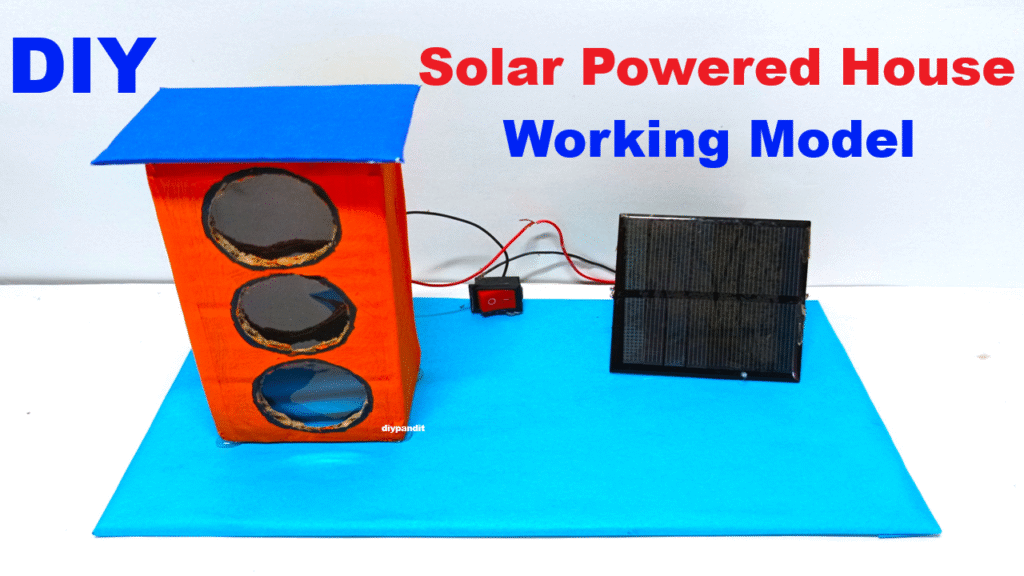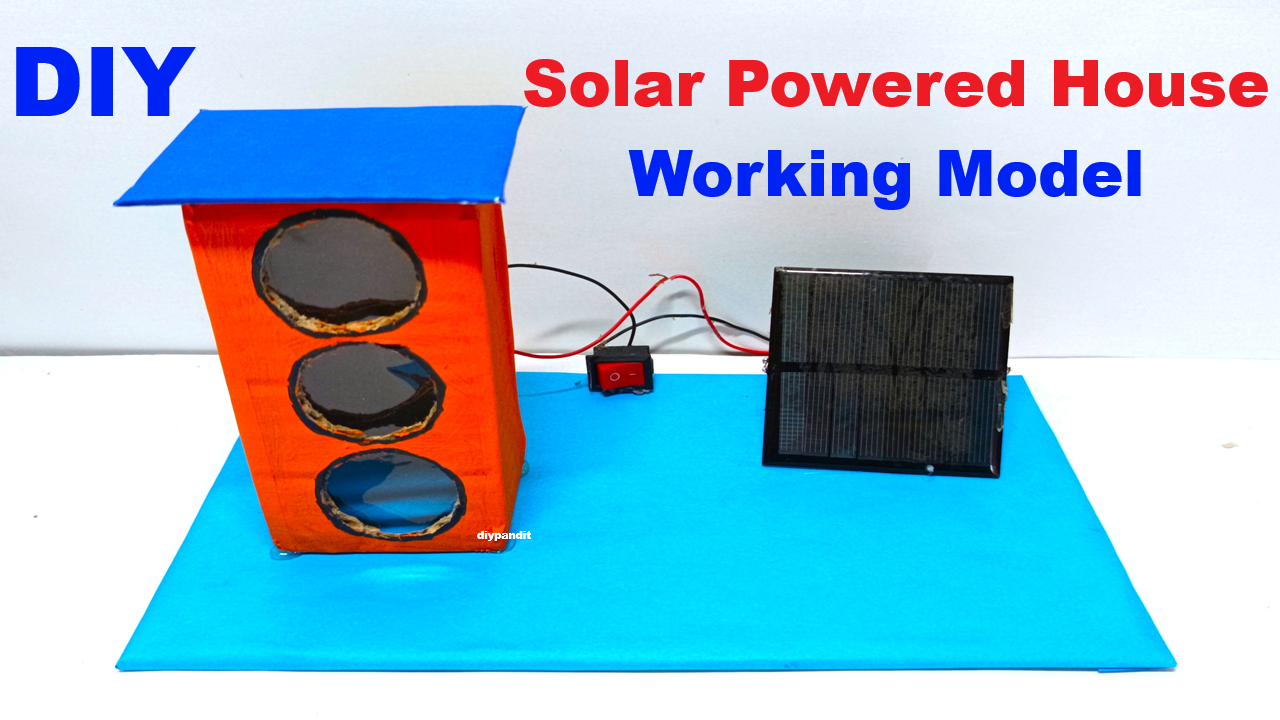Concept / Principle:
This project demonstrates how solar energy can be converted into electrical energy using solar panels to power small household components like LED lights, fans, or a motor — showing the concept of renewable energy and sustainable living.

Scientific Principle:
Solar panels contain photovoltaic (PV) cells that convert sunlight (solar radiation) into electricity (DC current). This power can be used to light up homes or charge batteries for later use.
Scientific Explanation:
- Sunlight falls on the solar panel.
- The solar cells convert light energy into electrical energy.
- The generated electric current flows through wires to power small appliances like LED bulbs, mini fan, or motor in your model.
- This demonstrates how renewable energy can replace fossil fuel-based electricity.
Materials Required:
- Cardboard / Thermocol base (1.5×1.5 ft)
- Mini Solar Panel (3V–9V)
- Wires & Switch
- Small LED bulbs or mini fan motor (DC motor)
- Small battery (optional backup)
- Toy house materials:
- Cardboard / thermocol / ice-cream sticks
- Glue gun / Fevicol
- Colored paper / paints for decoration
- Transparent plastic sheet (for solar panel roof)
- Toy trees, car, grass paper (for scenery)
- Sun symbol / chart label
Step-by-Step Model Making:
Step 1 – Prepare the Base
- Take a thermocol or cardboard base and cover it with green paper (to represent grass).
- Mark areas for house, solar panel, and wiring.
- Write the title:
“Solar Powered House – Renewable Energy Model”
Step 2 – Build the House
- Use cardboard or thermocol to make a small house structure (walls + roof).
- Paint or cover with colored paper.
- Leave the roof open or flat to mount the solar panel on top.
Step 3 – Mount the Solar Panel
- Fix the solar panel on the roof at an angle (30–45°) facing upward — this represents how real panels are installed to receive sunlight.
- Secure it using glue or tape.
Step 4 – Wiring
- Connect the output wires of the solar panel to:
- A small LED bulb (for light demonstration)
- Or a mini DC motor (to rotate a paper fan or ceiling fan inside house)
- Add a switch in between to turn the system on/off.
- If the solar output is low indoors, connect a small rechargeable battery in parallel for consistent performance.
Step 5 – Add Electrical Components
- Place LED lights inside or outside the house.
- Fix the fan (mini motor + paper blades) on the side or inside.
- Test the model under sunlight or use a torch/desk lamp to simulate the sun.
- When light falls on the panel → the LED glows and fan spins.
Step 6 – Decoration & Finishing
- Add mini trees, roads, vehicles, and a sun cutout.
- Label parts:
- Sunlight → Solar Panel → Light & Fan
- “Conversion of Solar Energy into Electrical Energy”
- You can also write “Save Energy – Go Solar!” as your slogan.
Explanation (For Presentation):
“This is a working model of a solar-powered house.
When sunlight falls on the solar panel, it generates electricity that powers the lights and fan in the house.
This project shows how renewable solar energy can be used to run home appliances, reduce pollution, and save electricity.
It works on the principle of Photovoltaic Effect.”
Applications:
- Used in solar homes, street lights, and water heaters
- Promotes renewable energy & sustainable development
- Reduces carbon footprint and electricity costs

